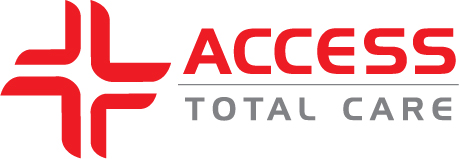The Benefits of Urgent Care: A Comprehensive Comparison with Emergency Rooms and Primary Doctors
In today’s fast-paced world, access to healthcare services has become a crucial aspect of maintaining our well-being. When medical needs arise unexpectedly, individuals are often presented with the dilemma of choosing between three options. That’s visiting an emergency room, scheduling an appointment with their primary doctor, or seeking care at an urgent care facility. While considering various healthcare options, it’s important to recognize the merits of each. This article illuminates the reasons behind the growing preference for immediate care centers. These facilities, commonly referred to as walk-in clinics or immediate care facilities, are garnering attention as a superior choice for addressing non-life-threatening medical issues. This preference is especially notable when compared to the alternatives of emergency rooms and primary care doctors. We will delve into the key advantages of immediate care facilities. We will focus on their convenience, cost-effectiveness, and specialized services such as occupational health support.
I. Convenience and Accessibility
Urgent care centers stand out due to their convenience and accessibility, offering a flexible alternative to traditional healthcare options. According to a report by the Urgent Care Association (UCA), there are over 9,000 urgent care centers in the United States, ensuring that patients have widespread access to these facilities1. In contrast to primary care doctors, who frequently demand appointments arranged weeks ahead, immediate care centers present a walk-in approach that caters to individuals with hectic schedules. This inherent flexibility addresses the challenges posed by rigid appointment systems, ensuring that medical attention is accessible precisely when needed. This is particularly advantageous for individuals who need medical attention promptly but cannot predict the timing of their ailment.
Moreover, the extended operating hours of many urgent care centers, including evenings and weekends, ensure that individuals can seek medical care outside regular office hours. The UCA study revealed that nearly 85% of urgent care centers are open seven days a week1. This availability minimizes the need for patients to resort to overcrowded emergency rooms for non-emergent situations.
II. Cost-Effectiveness of Urgent Care
A significant factor influencing the preference for urgent care centers over emergency rooms or primary doctors lies with cost-effectiveness. The financial considerations inherent to seeking medical attention cannot be overlooked. In this regard, urgent care centers stand out as a practical choice with cost savings without compromising quality of care. The costs associated with emergency room visits are known to be exorbitant. This is primarily attributed to the substantial overhead expenses required to sustain the intricate infrastructure and staffing levels essential for managing critical cases.
These financial burdens imposed on patients seeking urgent medical attention can be staggering. The intricate nature of emergency care services often translates to inflated bills that can pose a significant challenge for individuals without comprehensive insurance coverage. According to the National Center for Health Statistics, the average cost of an emergency room visit in the United States was around $1,389 in 20202.
On the other hand, urgent care centers offer a more affordable option for non-life-threatening conditions. A study published in the Journal of Urgent Care Medicine found that the average cost of a visit to an immediate care facility is significantly lower, ranging from $71 to $125 per visit3. This cost differential can make a substantial difference, especially for individuals without health insurance coverage.
III. Specialized Services, Including Occupational Health
Urgent care centers have expanded their scope beyond basic medical services to offer specialized care, including occupational health support. Occupational health services are particularly valuable for employees and employers alike. They contribute to the overall productivity and well-being of the workforce. Immediate care centers equipped with occupational health resources can provide pre-employment screenings, workers’ compensation assessments, drug testing, and vaccinations, among other services.
A report by the American Academy of Urgent Care Medicine highlighted the importance of immediate care facilities in addressing occupational health needs4. Their ability to promptly address workplace-related injuries and illnesses not only reduces downtime for employees but also eases the administrative burden on employers. By offering tailored solutions for occupational health, immediate care centers contribute to a healthier work environment and improved workplace efficiency.
IV. Case Studies and Patient Experiences of Urgent Care
Numerous case studies and patient testimonials highlight the advantages of urgent care centers. A study conducted by the University of Michigan found that patients who utilized immediate care centers for non-emergent medical issues experienced shorter waiting times compared to emergency room visits5. Reduced waiting times not only enhance patient satisfaction but also expedite the delivery of care, leading to better health outcomes.
Furthermore, the ability of urgent care centers to provide immediate attention to various medical concerns is demonstrated through patient experiences. Testimonials often highlight the convenience of walk-in appointments, personalized attention from healthcare providers, and the quick turnaround for diagnostic tests and treatments. These experiences underscore the efficiency of immediate care facilities in addressing a wide range of medical needs.
Choose Access Total Care, Access Urgent Care or Access MedClinic
Urgent care centers have emerged as a superior choice for individuals seeking prompt and affordable medical attention for non-life-threatening conditions. Their convenience, extended operating hours, cost-effectiveness, and specialized services, including occupational health support, make them an attractive alternative to emergency rooms and primary care doctors. Urgent care centers have the ability to provide efficient and tailored healthcare solutions. As the healthcare industry evolves, immediate care centers stand as a testament to accessible, patient-centric care. They meet the diverse needs of today’s society.
In the realm of urgent care, Access Total Care, Access Urgent Care, and Access MedClinic emerge as the optimal choices for your healthcare needs. With a commitment to convenience, affordability, and specialized services like occupational health support, these centers ensure swift access to personalized care. Their proven track record of delivering efficient medical solutions aligns perfectly with the demands of modern life. When it comes to your well-being, trust Access Total Care, Access Urgent Care, or Access MedClinic to provide the highest level of care precisely when you need it most.
Footnotes/References
- Urgent Care Association. (2021). 2020 Benchmarking Report.
- National Center for Health Statistics. (2021). Health, United States, 2021.
- Weinick, R. M., Burns, R. M., & Mehrotra, A. (2010). Many Emergency Department Visits Could Be Managed At Urgent Care Centers And Retail Clinics. Health Affairs, 29(9), 1630-1636.
- American Academy of Urgent Care Medicine. (2020). Occupational Medicine & Urgent Care.
- University of Michigan Health System. (2013). Many Patients Choose Urgent Care for Nonurgent Health Issues, University of Michigan Health System Study Finds.





















